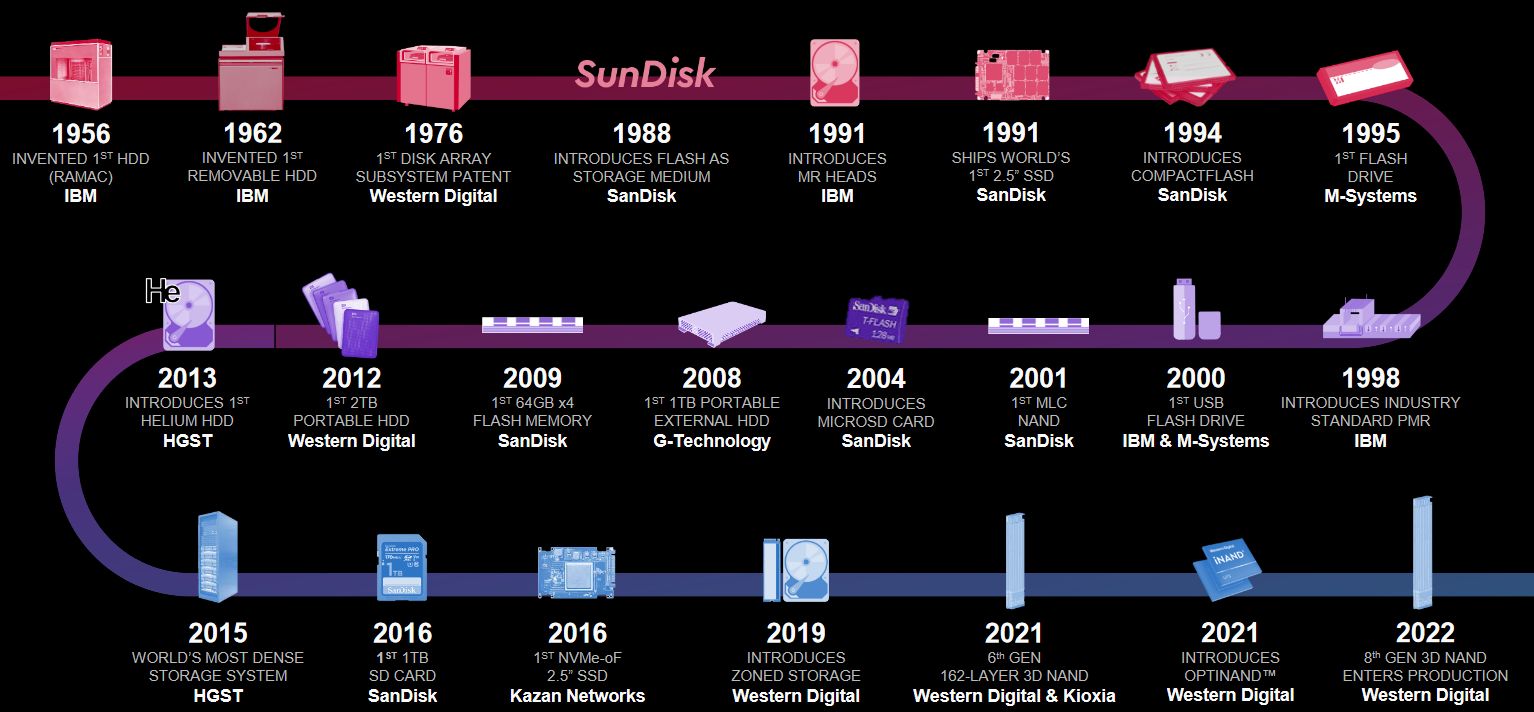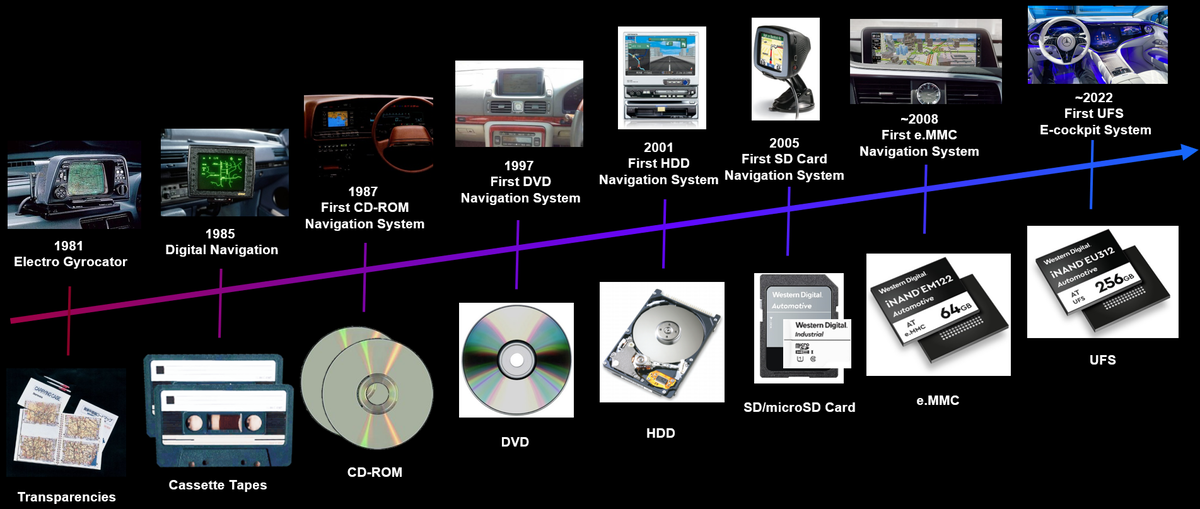I was just cogitating on the company Western Digital. In turn, this led me to ruminate on the Monty Python movie The Life of Brian. In particular, I was recollecting the What have the Romans ever done for us? sketch.
As you doubtless recall, this salty satire starts with the character played by John Cleese chairing a protest meeting in Jerusalem circa 33 AD and posing the rhetorical question, “What have the Romans ever done for us?” Unfortunately, his audience responds with a series of suggestions, such as “Well, the roads,” to which he responds, “Obviously the roads, that goes without saying, but…”
Eventually, John’s character sums things up by taking a deep breath and saying, “Right… apart from sanitation, medicine, education, wine, public order, irrigation, the roads, the freshwater system, and public health… what have the Romans ever done for us?” (Why not take a moment to watch this 1-minute video snippet to remind yourself of this classic skit.)
“But what has this spoof got to do with the Western Digital Corporation?” I hear you cry. Well, suppose we were gathered at an engineering conference and I asked the audience, “What has Western Digital ever done for us?” I can imagine someone shouting, “Well, hard disk drives (HDDs),” and me replying, ““Obviously HDDs, that goes without saying, but…” and eventually ending up with my listing a litany of products and technologies.
As just one example, did you know that, circa 1975, Western Digital (WD to their friends) was the largest independent calculator chip maker in the world? Surprise! And, as just one aside, did you know that Western Digital has been recognized as being one of the world’s most ethical companies for the fifth time? You’re welcome.
However, that’s not what I want to talk about here because we have other poisson à frire, as it were. I was just chatting with Russ Ruben, who is Director of Automotive and Emerging Segment Marketing for Western Digital’s Flash Business Unit (that’s a lot to fit on a standard-sized business card, is all I’m going to say).
The topic of our talk was “Vehicles 4.0” and the storage systems that are going to be required by emerging and future generations of software-defined vehicles (SDVs). Just to provide some background and knowing my fondness for nuggets of knowledge and tidbits of trivia, Russ kicked off by reminding me of WD’s role as a storage inventor and innovator over the years.

Storage invention and innovation (Source: Western Digital)
I just took a moment to look up the first entry from this graphic. The IBM 305 RAMAC was the first commercial computer to employ a moving-head HDD for secondary storage.
The disk system involved fifty 24-inch-diameter (610 mm) disks that, between them, could store 5 million alphanumeric characters in 8-bit fields. This may seem like “small beans” today, but—at that time—IBM touted the system as being able to store the equivalent of 64,000 punched cards, which was nothing to be sneezed at. Two independent access arms moved up and down to select a disk, and in and out to select a recording track, all under servo control. The average time to locate a single record was 600 milliseconds.
But we digress… The bottom line here is that, considering only storage technologies, Western Digital spans the gamut, from consumer (gaming, personal storage, prosumer) to embedded and removable products (automotive, industrial, mobile, and emerging markets) to the client-side (compute, smart video, network-attached storage (NAS)), all the way to the data center.
Speaking about digressing, although the main focus of our discussion was intended to be data storage for Automotive 4.0, I’m afraid we got a little sidetracked by the topic of automotive navigation.

Evolution of automotive data storage (Source: Western Digital)
For example, this was the first I’d heard of the Electro Gyrocator, which used transparencies as a storage medium circa 1981. As we read on the Wikipedia:
Unlike most navigation systems of today, it did not use GPS satellites to maintain its position and discern movement of the vehicle. Rather, it was an inertial navigation system, because it contained a helium gas gyroscope that could detect both rotation and movement. A special servo gear was also attached to the transmission housing to feed information to the Gyro-Cator to help maintain position, map speed and distance traveled.
Transparent maps were placed inside the unit and it would scroll them past a 6 inch monochrome CRT illuminated screen as the car traveled along. The monitor would indicate by a series of circles (or cross hairs) on the screen to show the vehicle’s current location or display lines for path of travel. A marking pen was also included to help make personal indicators on the map if needed. Adjustments could be made to change the display scale, position, rotation, brightness, and contrast.
Similarly, I was unaware that digital automotive navigation systems circa 1985 stored their data on cassette tapes. Also, this was my first introduction to next-generation navigation systems based on universal flash storage (UFS).
Russ and I chatted about how vehicles have evolved over the years. This evolution, which we’ve touched on in previous columns here on EE Journal, can be summarized as Vehicle 1.0 (Distributed / Functional), Vehicle 2.0 (Distributed / Digital), Vehicle 3.0 (Domains / Updatable) and Vehicle 4.0 (Zonal / Software Defined).
Reaching the current state of play has involved myriad architectural changes, including dynamic data processing and communication back and forth between vehicles, edge, and cloud; continuous software and firmware updates; and modularized hardware for serviceability and upgradability.
Until recently, automotive retailers largely had a “one-and-done” mentality when it came to selling cars. Of course, they hoped for repeat sales in the future, but with respect to any particular sale, once the customer had driven their new car out of the showroom, that was “all she wrote” (excepting things like oil changes and other servicing activities). By comparison, the increasing software content of 4.0 vehicles flings open the door to a wide variety of monetization opportunities, including on-demand services, subscriptions for new features and updates to existing features, hardware upgrades, advertising (we all hate it but we know we’re going to be exposed to it), and data as a service (DaaS) and fleet services. According to Stellantis, features on demand have a projected annual growth of ~60% through 2030.
“So, what does Western Digital have to do with all of this?” I can imagine you muttering under your breath. “What? You mean apart from the fact that they have world-renowned expertise in all forms of storage media?” I can envisage myself replying (somewhat snarkily, it has to be said).
For example, you can literally “wear out” memory media, irrespective of whether you are using HDDs, SDDs, or other types of Flash. A lot of this is a function of how you are reading and (especially) writing the data. When consulting with automotive OEMs and Tier 1 suppliers, in addition to providing training in the various types of media, the folks at Western Digital can simulate the memory subsystems under consideration with an understanding of the application workloads, showing how modifying the read/write data profiles can increase the longevity of the different types of media.
At the end of the day, the main message Russ wishes to impart is that new and future generations of software defined vehicles require a long-term data strategy—storage cannot be an afterthought. There are unknowns (risks), such as what will future workloads look like, how much data storage will be needed in the future, and how many years will the storage device be required to keep on functioning? There are also possible risk mitigation strategies, such as simulating and verifying the media in the context of its anticipated workloads and data profiles, over-provisioning by one or two capacity points higher than what is required today, implementing health monitors and reporting mechanisms alongside the storage media, and creating a modular architecture tailored for serviceability and upgradability.
I don’t know about you, but there’s a lot I’ve simply not thought about here. I just bounced over to peruse and ponder Western Digital’s automotive product offerings, where the very catchy tagline “Automotive: Data Fuels the Future” immediately caught my eye (“that’s very punny,” I thought). I also see it’s estimated there will be 115 million connected vehicle shipments around the world by 2025, and it’s also expected that level 4 and level 5 autonomous vehicles will need 2 terabytes of onboard storage by 2025.
I may be mistaken, but I think the route is clear for Western Digital to drive into a glorious future (I can be punny too). How about you? What do you think about all of this?




